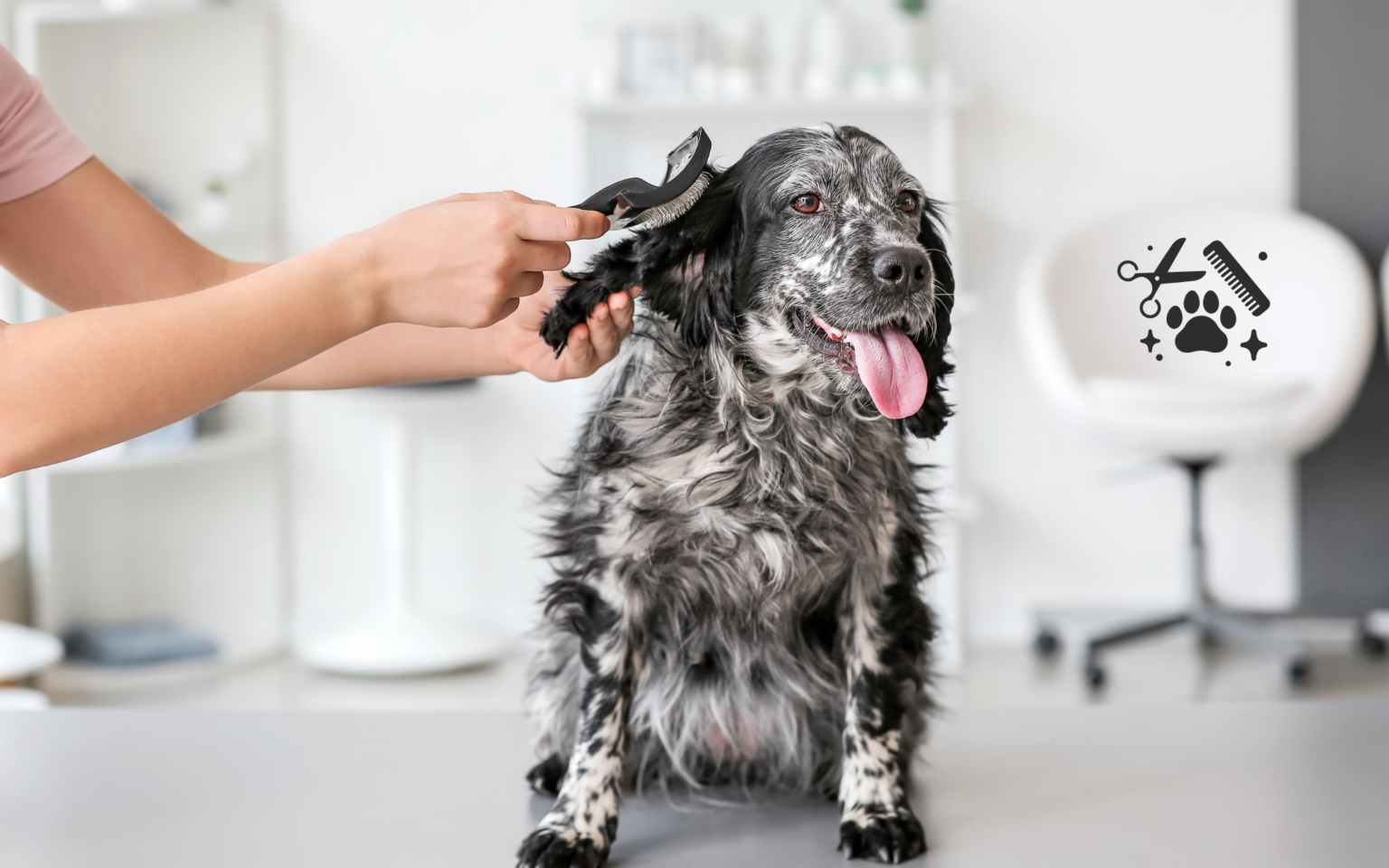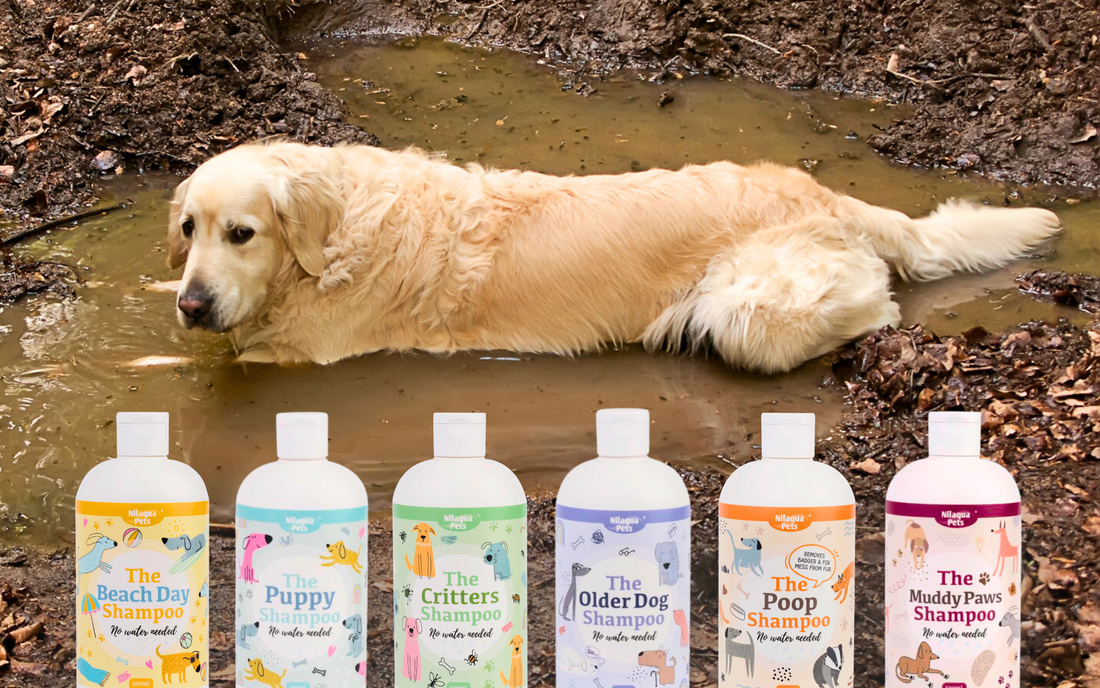Maintaining regular grooming practices does more than make your dog look their best, it also helps them feel their best, too. Without proper grooming and hygiene maintenance, your dog’s quality of life can decrease. For example, issues like overgrown nails and fur mats can cause pain and discomfort, leading to a less happy and content pooch.
While you may prefer to take them to a professional for a full groom, there are steps you can take in between groomings to keep them healthy and happy. Not only does at home maintenance save you money by making each professional groom last longer, it can also provide a unique bonding experience. This article covers some key tips and tricks for grooming upkeep practices you can do at home.
1. Brushing
Brushing your dog's coat is essential for maintaining their overall health and appearance. The frequency of brushing depends on your dog's coat type. For example, short-haired breeds may only need brushing once a week. In contrast, long-haired or curly-coated dogs might require daily grooming to prevent painful mats and tangles.
Choosing the right tools is crucial for a successful grooming session. Slicker brushes work well for most coats, while deshedding tools are ideal for breeds prone to heavy shedding. When brushing, start at the base of the coat and work your way up, gently detangling any mats. Regular brushing is the best way to prevent mats while also promoting healthy skin.
2. Bathing
Bathing your dog is an important part of their grooming routine, but how often you should do it depends on their breed, activity level, and skin condition. Generally, dogs with oily coats or those that spend a lot of time outdoors may need more frequent baths, while others can go longer between washes. If you feel unsure about how often to bathe your pooch, your vet can give you tailored advice based on their knowledge of your dog and the factors mentioned above. Make sure to always use dog-safe shampoos and conditioners specifically formulated for their skin, as human products can be too harsh and lead to irritation.
When bathing your dog, start with lukewarm water, thoroughly wetting their coat before applying shampoo. Work the shampoo into a lather, avoiding the eyes and ears, and rinse thoroughly to remove all residue. After the bath, gently towel dry your dog or use a blow dryer on a low, cool setting to avoid overheating or causing stress. If you opt for the blow dryer, it can be useful to invest in some doggy ear covers to block out the loud noise it emits. This helps further reduce stress during the drying process. Taking these steps will ensure your dog stays clean, comfortable, and happy.
3. Nail trimming
Nail trimming is a crucial aspect of your dog's health care, as overgrown nails can lead to discomfort, pain, and even posture issues that affect their overall well-being. To trim your dog's nails, you'll need the right tools. The essentials include a pair of nail clippers or a grinder, as well as some styptic powder in case of accidental cuts. Start by gently holding your dog’s paw and trimming a small portion of the nail at a time, avoiding the quick, which is the sensitive part of the nail containing blood vessels. If your dog has light-coloured nails, the quick is usually visible, but for darker nails, trim gradually to prevent cutting too much.
Keeping your dog calm with treats and praise during the process can help make nail trimming a positive experience. Some owners even like to put peanut butter slathered cling film on their head to keep their dog distracted and entertained. If you do accidentally cut the quick, apply styptic powder to stop the bleeding. Unless bleeding does not stop with the powder or becomes very heavy, cuts to the quick during nail trimmings are rarely something that requires a vet visit. However, if you do become concerned, give them a call for some advice. While many dogs tend to dislike the process, regular nail trims will keep your dog comfortable and help them maintain proper posture.

4. Ear cleaning
Cleaning your dog’s ears is vital for preventing infections, especially in breeds that are prone to ear issues due to their anatomy or lifestyle. For example, dogs that have big floppy ears, and those who enjoy swimming, are typically more prone to ear infections and issues. However, any dog can develop them. Regular ear cleaning helps remove dirt, wax buildup, and moisture that can lead to irritation or infections. To clean your dog’s ears, you’ll need a dog-safe ear cleaning solution and cotton balls or pads.
Begin by gently lifting your dog’s ear flap and applying a few drops of the cleaning solution into the ear canal. Massage the base of the ear to help the solution break down any debris, then use a cotton ball or pad to wipe away the loosened dirt and wax. You can also use dog-safe wipes designed specifically for ear cleaning. Regardless of the option you choose, make sure not to insert anything deep into the ear canal, as this can cause injury. Regular ear cleaning will keep your dog’s ears healthy and free from painful infections.
5. Dental care
Regular dental care is essential for your dog’s overall health, helping to prevent plaque buildup, tartar, and bad breath, as well as more serious issues like gum disease and tooth loss. To care for your dog’s teeth, you’ll need a finger brush or dog toothbrush and dog-safe toothpaste, as human toothpaste can be harmful to dogs.
Start by letting your dog get used to the taste of the toothpaste and the feel of the brush by gently introducing them during a calm moment. Gradually work up to brushing, lifting your dog’s lips and gently scrubbing in circular motions along the gum line. Be patient and positive, offering treats and praise to create a pleasant experience. Aim to brush your dog’s teeth at least a few times a week. Daily tooth brushing is ideal if your dog will tolerate it. Regular dental hygiene practices can help your dog maintain good oral hygiene and keep their breath fresh.
6. Grooming sensitive areas
Grooming sensitive areas on your dog, such as the eyes, face, paws, and pads, requires extra care to ensure their comfort and safety. When cleaning around the eyes, use a soft, damp cloth or specialised wipes to gently remove any debris or tear stains, and carefully trim any facial hair that might irritate the eyes or obstruct vision.
For the paws, regularly check between the pads for dirt, debris, or signs of irritation. Cleaning these areas helps prevent infections, while trimming excess hair between the pads reduces the risk of matting and slipping on smooth surfaces. By paying attention to these sensitive areas, you can help your dog stay comfortable and avoid potential health issues.
Final thoughts
Grooming your dog is an essential part of responsible pet parenthood. While you don’t need to take on their full haircut by yourself, taking some steps to maintain their hygiene and comfort at home is crucial. Following the tips listed above can help you ensure you’re tailoring your pet’s grooming routine to their needs and approaching it with the correct tools and plenty of confidence.





